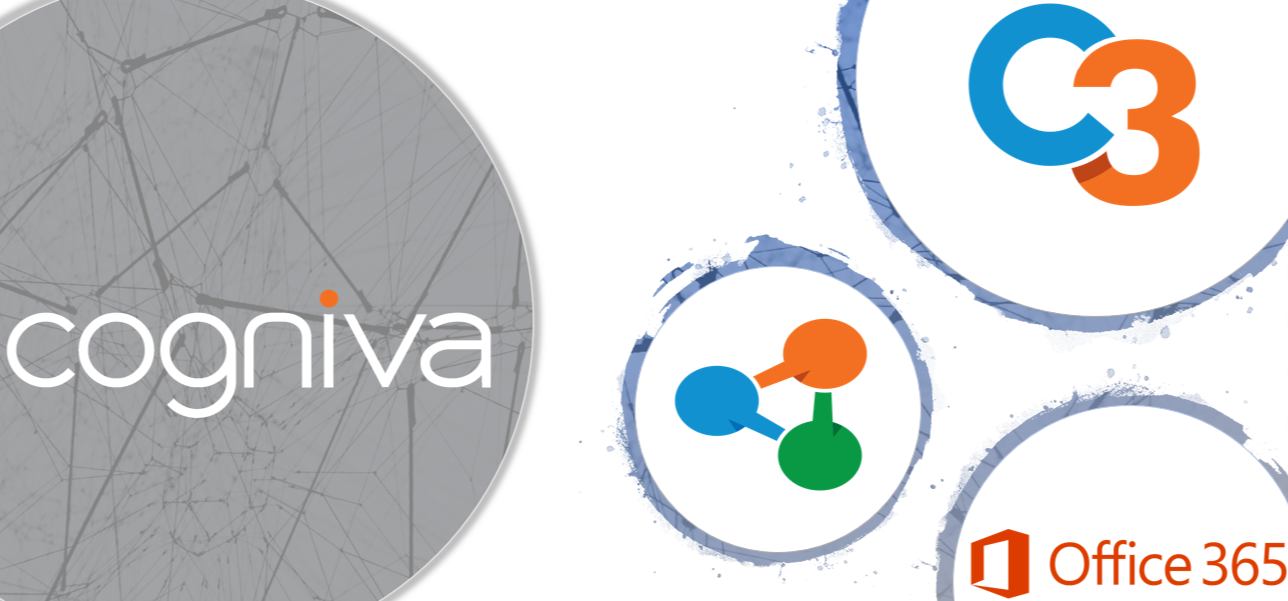Automated Metadata Creation
Automated Assignment of Retention and Sensitivity Labels
Automated Content Routing to various Content Management Systems
Decentralized Metadata Governance over Multiple Repositories
C3 seamlessly integrates with Microsoft 365, bringing a set of advanced functionality that automates many Information Governance tasks normally performed by end users. C3 significantly enhances the basic MS 365 offering, but can also improve the advanced Information Governance functionality, such as Retention and Security labelling.
In most deployments, users must go through the tedious task of manually creating tags for every new document they create or receive. C3 removes this burden by assigning rich metadata to content created through Microsoft 365. In effect, C3 creates a virtual metadata layer that is not only compatible with Microsoft 365 but also with over 30 different content management systems including Open Text Content Server.
The automated classification provided by C3 includes more than just standard metadata. It also has the capability of applying retention rules, security levels, privacy flags, and other compliance rules, in a fully automated or decision aided fashion, depending on an organization’s needs and policies.
C3 goes beyond current Artificial Intelligence (AI)-focused solutions. C3 uses AI algorithms that are defined within the context of a structured business-oriented information architecture. This approach drastically enhances both the precision and flexibility of our auto-classification engine. It makes it possible for organizations to engage with users throughout the development of their IA and automatic classification algorithms, including the ability to gather the data required to train the AI algorithms directly from the creators of the information.

Organizations of all sizes produce an enormous amount of information in their everyday business activities. User productivity is often impaired as employees spend more and more time managing and searching documents, emails, and other content instead of focusing on their job function.
Content is disorganized and chaotic, hindering employees’ access to pertinent information. This has negative repercussions for knowledge workers who are unable to promptly access accurate information to make informed business decisions, especially nowadays where key information can be found in multiple places in multiple systems both in the cloud and on premises.
Applying rich and consistent metadata can efficiently organize and structure content while providing clarity of relationships and data lineage. Unfortunately, users do not want to create metadata manually and Microsoft 365 does not have the capability of automatically creating rich descriptive metadata. Metadata creation is perceived as being complex and time consuming: Users want to focus on their work, not IM or IG tasks.
C3 integrates seamlessly into Microsoft 365 to automate the creation of rich and consistent metadata with minimal user intervention. C3 has the capability to automatically route content, and its associated metadata, directly into the appropriate location of the corporate repository or repositories (SharePoint and many others). This provides an easy solution to link data and information stored in multiple systems.
The quantity and complexity of compliance rules related to privacy, security, lifecycle management and other legal obligations are increasing exponentially. Organizations have been transferring the responsibility of adherence to these compliance policies to users with very poor results. This situation has put many organizations at risk. It also requires continuous efforts to sustain user training and awareness to ensure they can fulfill their compliance obligations correctly.
In the most common Microsoft 365 scenario, end users are responsible for choosing and applying retention and sensitivity labels manually to content they create. This approach requires significant end-user training and awareness and has proven to be ineffective in the past. While it is possible to set up a certain level of auto-classification to assign retention and sensitivity labels within the Microsoft 365 environment, the decision logic is based solely on document content, not its business context. Experience has proven that understanding the business context in which a document or email is created or received is essential in deciding which compliance policies to apply.
C3’s backbone, the structured business-oriented information architecture, provides the required context to automate the application of compliance rules at the point of creation with minimal user involvement. C3 uses Artificial Intelligence, text analytics and a context-sensitive rules engine to manage and assign compliance rules related to privacy, security, retention and disposition, Open Data and many more. This includes the assignment of Microsoft 365 retention and sensitivity labels as well as retention policies and access permissions in Open Text Content Server and more than 30 additional platforms.
Because C3 is integrated seamlessly into the Microsoft 365 environment, users always have the capability to visualize, validate or even modify (with proper permissions) compliance rules assigned by C3.
With C3 the user is always aware of how his/her documents are processed.

In traditional ECM Systems, users are exposed to a complex folder structure. The complexity of the folder structure is not only driven by navigation needs, but also by the necessity of creating multiple additional folders and folder levels to explicitly show meaningful context, and/or to support access permissions and records management requirements.
With this approach, there is a risk that ECM systems become glorified “Shared Drive” structures. The complexity of the resulting folder structure is a source of confusion and error for both end users and administrators.
C3 helps to resolve this problem by automatically applying metadata, access permissions and compliance rules at the document level. This includes the automatic assignment of sensitivity and retention rules for specific documents. In addition, C3 can be configured to enable content routing rules from Microsoft 365 or MS Explorer directly to existing folders in corporate repositories.
When documents are saved from Microsoft 365 to SharePoint or other platforms, C3 can save the metadata values in more than one language simultaneously. Metadata in all languages is then available for manual and automatic classification as well as search and discovery.
In most ECM systems, taxonomies or metadata pick lists such as the SharePoint Term Store or Categorie/Attributes in Content Server have to be managed manually. This is a lengthy process that has a significant impact on the user experience. Users are often hindered, or delayed, from being able to save their content as they wait for values to be added or updated.
With the C3 Distributed Governance module, any user can request additions or modifications to metadata lists or taxonomies in real time using C3’s simplified Microsoft 365 interface. Suggested changes are immediately posted to a decentralized governance dashboard for approval or rejection by the Office of Primary Interest (OPI) who understands the context, implications, and validity of the suggested change. Once the modification is approved, the metadata is automatically updated in C3 as well as in all connected ECM systems. For example, if a new metadata value is added in a pick list or taxonomy, C3 will create it in the appropriate SharePoint Term Store as well as in Open Text Content Server attributes pick list.
This ensures that the corporate information architecture evolves with changes within the organization in a timely, organic manner.

The final decision on what constitutes valuable information to the organization, e.g., transitory, business, or enduring value, is most often left to users. This means that all users must be trained on how to apply this complex set of rules in their day-to-day work. Experience has proven that users do a poor job at administering IM/Records Management (IM/RM) rules to content they generate. As a result, continuous auditing is required to ensure the integrity of information.
With C3 integrated in Microsoft 365, compliance guidelines are preconfigured. The software automatically applies rules based on both the context in which the information is created and a semantic analysis of the content. This includes the accurate determination of transitory, business, or enduring value of information in real time.
The information architecture (Metadata Framework, IM/RM rules) required by systems such as SharePoint or Open Text Content Server is maintained and locked within these proprietary systems and platforms. This makes content integration and migration between and across sources difficult.
Implementing C3 simplifies the process, because the C3 business-oriented information architecture is tool agnostic and can be leveraged by many systems and platforms.
Copyright © 2018 Struto. All rights reserved. Terms and Conditions & Online Privacy